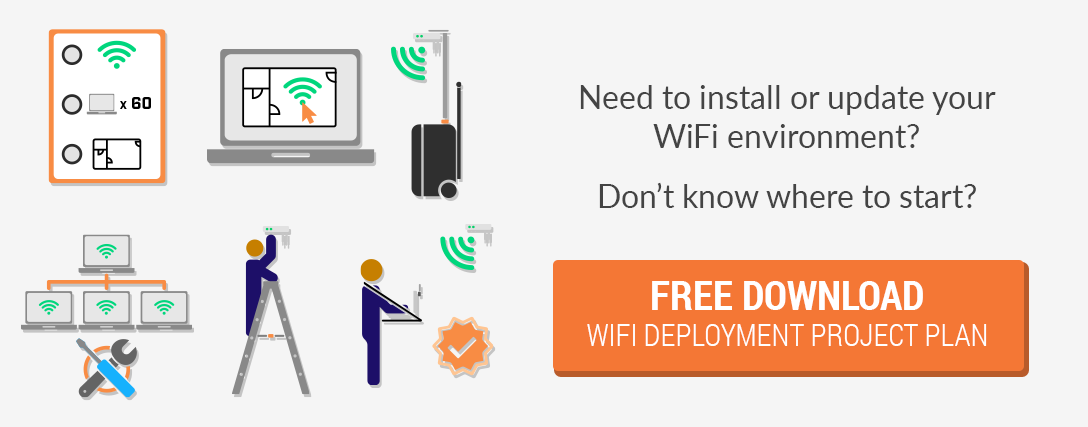Implementing a new wireless network takes a lot of planning (WiFi Design Guide). In order to complete the network design phase, the following factors should be taken into consideration and thoroughly planned out.
- Size of Physical Location
- Intended Use of the Wireless Network
- Number of Wireless Devices
- Wireless Client Device Capabilities
- The Environment
- Performance Expectations
- Bring Your Own Device (BYOD) Acceptance
- Building Age and Construction Materials
- Network Infrastructure Devices
Use a WiFi design checklist to help you prepare for building, restoring, or updating a wireless network. Also, check out our WiFi Design: 10 Things to Think About Before Meeting with Your WiFi Consultant blog post for even further information
Wireless Site Survey
Typically, a site survey falls between the initial design phase and the installation of a wireless network, and is used to collect as much information about the business’ environment as possible. Depending on the type of business looking to install a new wireless network, the objectives of a site survey can vary in difficulty. While there is no set structure for how to perform a site survey, having insight into the business will help in determining the scope of the survey.
1. Size of the Physical Location
The size of a business’ physical location will determine the extent of the site survey. A small establishment will most likely not require a full survey. While it is still recommended that the surveyor visit the location, only simple tests might be needed to determine RF channels and AP mounting options. A large installation, on the other hand, will require a much more extensive survey that can include manual or predictive site surveys.
2. Intended Use of the Wireless Network
A site survey takes into consideration the size of the location and the intended use of a wireless network in order to determine the amount of access points needed for the installation. A smaller, causal establishment, like a café, probably needs WiFi for internet browsing, social media, or checking emails. A larger establishment might be running more applications, such as electronic imagining, graphics design, and database programs, which will require more access points.
3. Number of Wireless Devices
The number of users and user devices impacts the number of access points needed for a wireless network. Many organizations estimate 3-5 devices per user. So, as more devices connect to the network and increase capacity requirements, the need for additional access points will also increase.
4. Wireless Client Device Capabilities
Knowing what types of devices are connecting to your wireless network is extremely important. Some devices, such as tablets and smartphones, have specific functionality that need to meet network requirements. During the site survey, the surveyor will interview people to determine what types of wireless devices are regularly being used.
5. The Environment
When designing a wireless network, it is important to understand what kind of environment it will be installed in. Different environments, such as general office spaces, health-care locations, and educational settings, will offer different challenges.
6. Performance Expectations
Part of the site survey will include determining and defining the customer’s expectations for performance. The performance of a network is based on the number of infrastructure devices installed, including bridges and access points.
7. Bring Your Own Device (BYOD) Acceptance
When performing an RF site survey, it is necessary to consider the amount of mobile devices connecting to a network. Since the rise of smartphones, more and more companies are allowing employees to bring their own devices into the wireless environment. This requires the network to be able to support more than the anticipated amount of devices.
8. Building Age and Construction Materials
The age and construction materials of a building need to be determined during a site survey as they can severely impact signal strength. For example, an older building will most certainly require more access points due to the construction materials in both interior and exterior walls.
9. Network Infrastructure Devices
When designing a wireless network, it is imperative to determine if the organization has the space and equipment to install a new network. Therefore, the surveyor will review the number of available Ethernet ports and the locations of the telecom/wiring closets.




